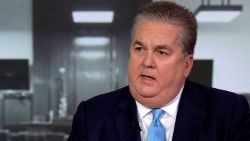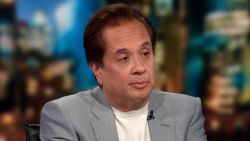Former Vice President Joe Biden’s Super Tuesday showing has set up a head-to-head competition with Vermont Sen. Bernie Sanders over the direction of the Democratic Party – and over who will face President Donald Trump in November.
Visit CNN’s Election Center for full coverage of the 2020 race
Biden is running on the legacy of the eight years he served alongside President Barack Obama while Sanders – an independent – is offering a democratic socialist platform with a radically different vision for America.
Both candidates will make the case for their respective platforms ahead of Tuesday’s contests in Idaho, Michigan, Mississippi, Missouri, North Dakota and Washington. They are also scheduled to meet onstage at the CNN/Univision Arizona debate on March 15.
Here’s a look at their proposals on key issues.
Health care
Biden
Biden has stuck by the Affordable Care Act, Obama’s signature healthcare plan, but has offered proposals for enormous new subsidies to make coverage through Obamacare’s exchanges less expensive. His plan includes a new “public option” that would allow people to buy into a program his campaign says would be similar to Medicare.
- The proposal would carry a price tag of $750 billion over 10 years, his campaign has said.
- Biden is proposing to foot the bill by raising income taxes on the wealthiest Americans to 39.6% – reversing part of the Republican-led Congress’ 2017 tax cut law that reduced that rate – and by requiring those who earn more than $1 million per year to pay 39.6% taxes on capital gains, rather than the current 20%.
Head here for more on Biden’s plan.
Sanders
Sanders’ proposed “Medicare-for-All” health care program is the foundation of his progressive platform. Read the highlights of his Senate bill here.
His plan would leave intact the current infrastructure of doctors, hospitals and other health care providers, but nationalize the health insurance industry. Nearly all the money individuals and employers currently pay through insurers as well as much of the money states pay would, under Sanders’ plan, instead be paid by the federal government.
Sanders has suggested that Medicare for All would end up reducing the amount the country spends on health care, which experts say isn’t the case – though individual households might end up coming out ahead.
- Multiple estimates have pegged the cost of Medicare for All at more than $30 trillion over a decade – a big chunk of change for taxpayers to cover.
- Sanders has said he would pay for the program by rolling back the 2017 Republican tax cuts, plus imposing additional taxes on the rich and capital gains taxes.
- Some funding would also come from collecting money that employers and individuals currently pay to private insurers – that is, trading premiums for higher taxes.
Head here for more on Sanders’ vision and how he plans to fund it.
Climate crisis
Biden
Biden has proposed a climate crisis plan that would set the US on track to eliminate net greenhouse gas emissions by 2050.
The proposal embraces elements of the progressive Green New Deal and seeks to go “well beyond” Obama’s climate goals.
As part of the proposal, Biden is calling for an end to fossil fuel subsidies and a ban on new oil and gas permits on public lands. Like other Democrats, he would also reenter the Paris climate accord, the landmark 2015 agreement on emissions reductions that Trump withdrew from during his first year in office.
Biden’s plan leaves Congress to decide what enforcement mechanism would be used to require corporations in the United States to meet the goals he lays out – and penalize them if they fall short.
- The plan carries a price tag of $1.7 trillion in its first 10 years, including $400 billion for research between universities and the private sector.
- Biden would pay for it by undoing the tax cuts enacted by Trump and congressional Republicans.
Sanders
Sanders, who excoriated Trump over withdrawing from the Paris agreement, is a leading proponent of the Green New Deal and is calling for an ambitious climate crisis plan that includes a vast mobilization to halt and reverse the effects of global warming over a decade.
The prime targets include meeting the Intergovernmental Panel on Climate Change’s goal of 100% renewable energy for electricity and transportation by 2030; cutting domestic emissions by 71% over that period; creating a $526 billion electric “smart grid;” investing $200 billion in the Green Climate Fund; and prioritizing what activists call a “just transition” for fossil fuel workers who would be dislocated during the transition.
In the process, the campaign claims, it would create 20 million new jobs in “steel and auto manufacturing, construction, energy efficiency retrofitting, coding and server farms, and renewable power plants.”
- The plan comes with a $16.3 trillion price tag, but Sanders has said it will “pay for itself over 15 years.”
- The largest potential funding source, an estimated $6.4 trillion, would come from revenue generated by the sale of clean energy – which will be administered by publicly owned utilities – between 2023 and 2035.
- Before that, Sanders would cut military spending used to protect global energy interests by more than $1.2 trillion while hitting up fossil fuel companies for more than $3 trillion in “litigation (against polluters), fees, and taxes.”
- An additional $2.3 trillion, the campaign says, would be raised from the taxes paid on the 20 million new jobs it promises to create.
Immigration
Biden
Biden’s immigration platform outlines a pathway to citizenship for undocumented immigrants while calling for broad reversals of Trump’s border policies.
- Biden’s plan would invest $4 billion in Central America in an effort to deliver “measurable reductions” in violence to slow migration to the US.
- His platform would also raise the US refugee admissions cap from the current 18,000 to 125,000.
- In an interview with CNN in July 2019, Biden said he opposes decriminalizing crossing the border without documentation. “I think people should have to get in line, but if people are coming because they’re actually seeking asylum, they should have a chance to make their case.”
Sanders
Sanders’ immigration platform calls for a large scale restructuring of the system through legislative action and a series of executive orders.
- He would place a moratorium on deportations, end raids by Immigrations and Customs Enforcement, stop construction of the wall on the US-Mexico border, end family separations and shutter for-profit detention centers.
- Sanders would also overturn Trump’s so-called public charge rule and ensure that immigrants are not discriminated against based on income or disability, while extending temporary protected status until more permanent resolutions are in place.
- The plan would also restructure the Department of Homeland Security, folding ICE into the Justice Department and Customs and Border Protection into the Treasury Department.
- Under the proposal, the government would create a program to welcome migrants displaced by climate change and would set a goal of accepting at least 50,000 people during his first year in office.
Education
Biden
Biden’s education platform would increase funding for schools in low-income areas, help teachers pay off their education debt and double the number of health professionals working in schools.
The plan would prioritize competitive pay for teachers, expanding access to preschool for 3- and 4-year-olds and districts offering rigorous coursework.
After those, Biden’s plan would leave it to school districts to identify their biggest needs to address with the remaining funding bump.
He’s said that “the bulk of” his education proposals can become law even if Republicans maintain control of the Senate after the 2020 elections.
- Biden has not offered details on how much the plan would cost overall or how he proposes to pay for it.
- A separate plan focused on higher education proposes two free years of community college that his campaign says would cost $750 billion per year.
Sanders
Sanders’ education policy plan lays out a 10-point agenda that calls for the end of for-profit charter schools, creates a salary floor for public school teachers, guarantees free school meals for all students and expands after school and summer school programs.
The platform proposes a salary floor of $60,000 a year for teachers tied to cost of living and a boost in the above-the-line tax deduction for out-of-pocket expenses on supplies.
His plan also called for a complete ban on for-profit charter schools and a moratorium on the funding of all public charter school expansion until a national audit on the schools has been completed.
- While Sanders did not offer specific funding sources for the plan, he did allude to the fact that rolling back tax cuts enacted during the Trump Administration would help to foot the bill.
For higher education, Sanders has pushed an ambitious “college for all” program that would eliminate the student loan debt of every American and calls for free tuition at all four-year public colleges and universities, as well as community colleges.
- Sanders has said new taxes on Wall Street would raise the $2.2 trillion necessary to pay for this program and his other college funding plans.
- It will include a 0.5% tax on stock trades (or 50 cents for every $100 worth of stock), a 0.1% fee on bonds, and a 0.005% fee on derivatives. Sanders believes that could raise more than $2.4 trillion over the next 10 years.
Gun violence
Biden
Biden’s gun control plan would require owners of assault-style rifles to either sell their firearms through a voluntary buyback program or register them with the federal government.
- The plan would addresses urban gun violence with an eight-year, $900 million program that would go toward efforts to combat shootings in 40 cities with the highest rates of gun violence.
- It would eliminate legal protections that prevent gun manufacturers from being held liable for how their products are used.
- Biden is also proposing a series of measures that have been widely-backed in the Democratic primary including closing loopholes in background checks before gun purchases, banning the sale of assault-style rifles and high-capacity magazines, and allowing states to implement “red flag” laws.
Sanders
Sanders, who has come under criticism from Biden over his past Senate votes on gun control, is pushing for expanded background checks and to close various loopholes in firearm purchases.
- Sanders’ policy aims to regulate assault weapons “the same way that we currently regulate fully automatic weapons — a system that essentially makes them unlawful to own.”
- His plan would push for harsher punishments for “straw” purchases, when someone purchases a gun for someone who cannot legally possess a firearm.
- It also calls for a ban on high-capacity ammunition magazines as well as the 3-D printing of firearms and bump stocks.
CNN’s Eric Bradner contributed to this report.




















